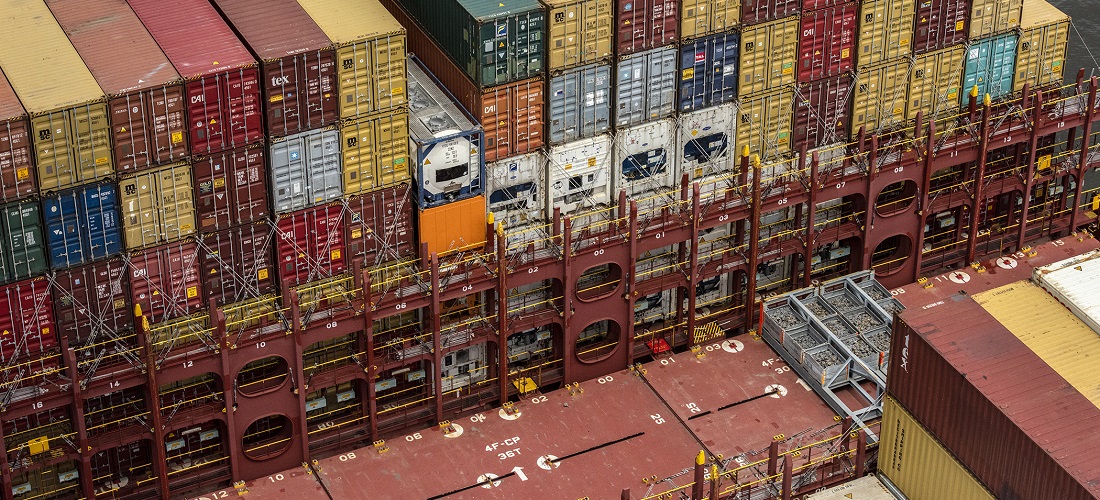
Trade between Brazil and Middle East accounts for 6.5% of total TEU volume
Jun, 17, 2020 Posted by datamarnewsWeek 202026
In a webinar promoted by the Arab Brazilian Chamber of Commerce in May, the vice president of Brazil, Hamilton Mourão, pledged to help improve the flow of trade and investments between Brazil and the Arab countries, including the creation of a shipping route between the country and the region. But is there enough cargo volume to justify the creation of an exclusive service?
The Middle East already represents an important region in the context of foreign trade, since the 15 countries that represent this region are responsible for 6.5% of total container shipping in the world. If the bloc were a single country, it would have the world’s third-largest volume, behind only China (28.5%) and the USA (6.9%).
Source: DataLiner (To request a DataLiner demo click here)
Looking at trade between Brazil and the Middle East, the volume traded is also quite expressive, with the region responsible for 6.5% of the total volume of TEU imported and exported (10% in exports and 2% in imports). As a basis for comparison, China represents 22% and the USA 13% of the volume of TEU imported and exported by Brazil.
According to the Arab Brazilian Chamber of Commerce, in 2019 the Arab countries became the third-largest destination for Brazilian exports. In 2018, the region occupied fifth place in the ranking for recipients of Brazilian exports, with US$11.4 billion imported by the regional bloc. In 2019 the region ranked third, behind only China and the United States, with imports worth US$12.1 billion. Exports from Brazil to the Arab countries rose 6.3% in 2019 compared to the previous year.
Despite this, there is still no direct sea route between Brazil and the Middle East. Currently, foreign maritime trade with the region is mainly served by Brazil-Europe services, where four services (MED-SAEC / MSE, NEO BOSSA / SIRIUS, PLATE EXPRESS, and NWC / ECX) transport 92% of the total volume. According to the Arab Brazilian Chamber, the organization has been working in partnership with the Union of Arab Chambers to formulate a strategy to create a direct maritime line, which should shorten the cost of transportation and the delivery time of goods. A study had begun to study this and a seminar on the subject was scheduled to take place this year in Alexandria, Egypt.
In the webinar, Mourão proposed to seek the most interesting ports for the arrival of Arab products in Brazil and the departure of Brazilian products for the Arab market. Mourão said that it is necessary to leave behind mere conversation and sit down to see what actually needs to be done. He even suggested that the Minister of the Civil House, Braga Netto, be involved in the matter.
Although the government can facilitate trade between countries with bilateral agreements, the decision on a new maritime route is up to the shipowners. DataLiner data indicates that there is still not enough volume to justify the creation of a direct route between Brazil and the Middle East since cumulative volumes for 2020 are practically at the same level as in 2019 – 6.1% of the total Brazilian volume. In addition, this volume makes up 16% of Europe’s services and the creation of a direct route would make vessels on this trade route have less volume.
DataLiner data shows that 81% of products exported by Brazil to the Middle East are concentrated in four categories: food, mainly meat (59% of the Brazil-Middle East volume), paper and cellulose (10%), wood and coal (8 %), and cotton (6%).
Source: DataLiner (To request a DataLiner demo click here)
Brazil’s imports from the region, on the other hand, are more diverse and less representative. The main items are plastics and derivatives (30%), chemicals (11%), salt, plaster, cement (10%), and metals (9%). Also according to DataLiner data, of the countries that make up the Middle East, the three most significant trading partners are Saudi Arabia, receiving 25% of the volume exported, United Arab Emirates with 24% of the volume, and Turkey with 18%. The remaining volumes (33%) are divided into 10 countries. It is worth noting that there is no cargo flow between Brazil and Afghanistan and Lebanon.
Source: Brazil-Arab News Agency
-
Shipping
Jul, 19, 2021
0
New Bimco clause clarifies contractual position on AIS Switch-off
-
Other Logistics
Nov, 22, 2021
0
Plan to take the coffee from the south of MG by rail to Angra
-
Grains
Sep, 09, 2022
0
Top exporter India approves 20% tariff on rice exports
-
Meat
Mar, 03, 2023
0
Pork: Brazil exports 69,825 thousand tonnes in February

